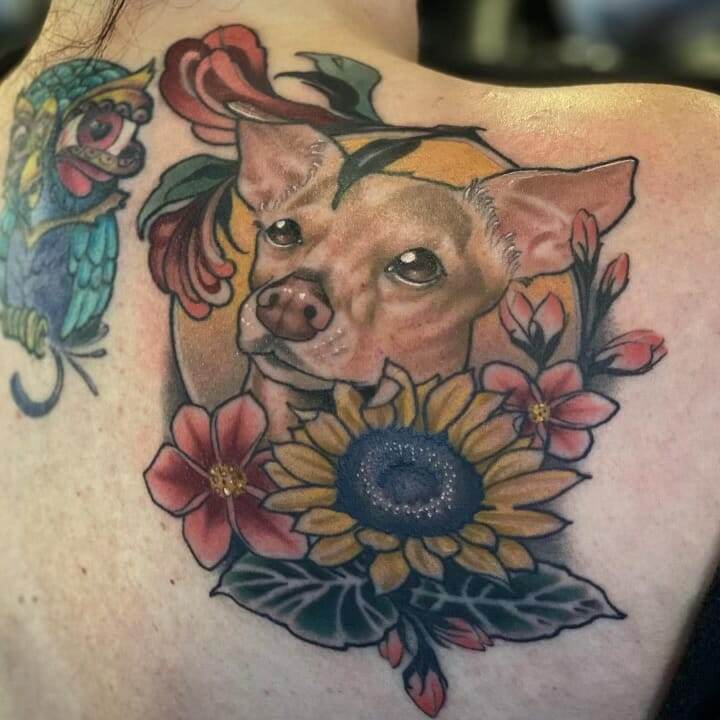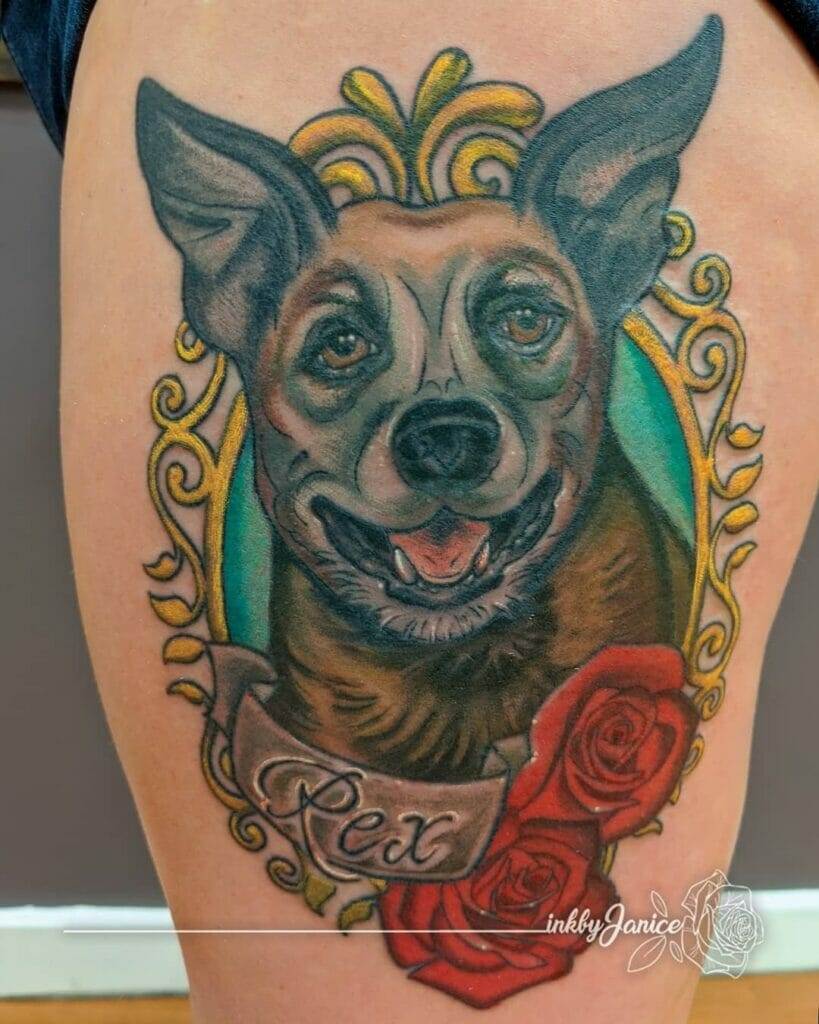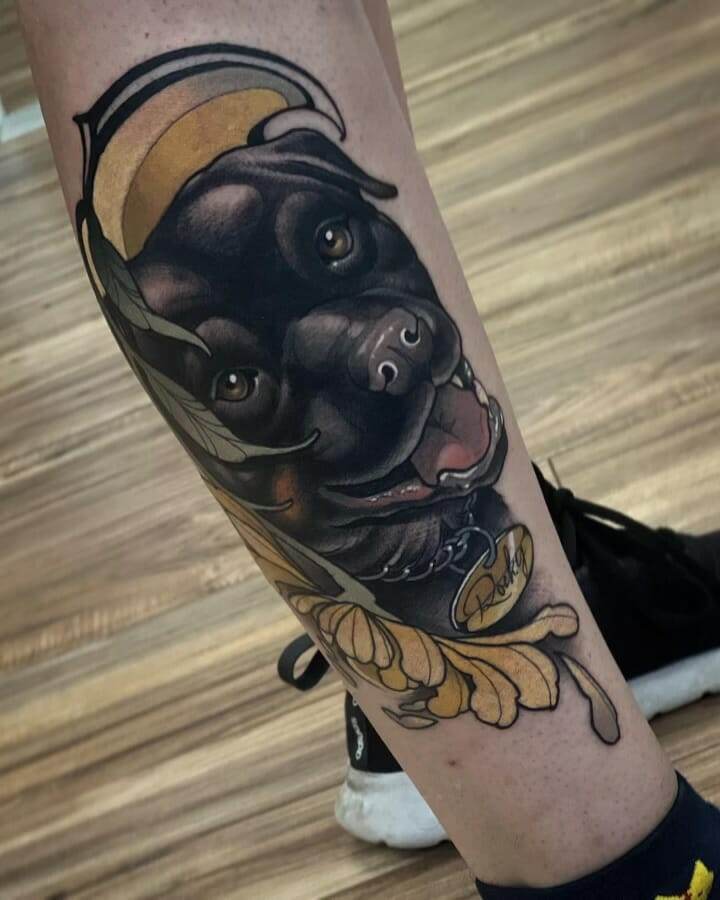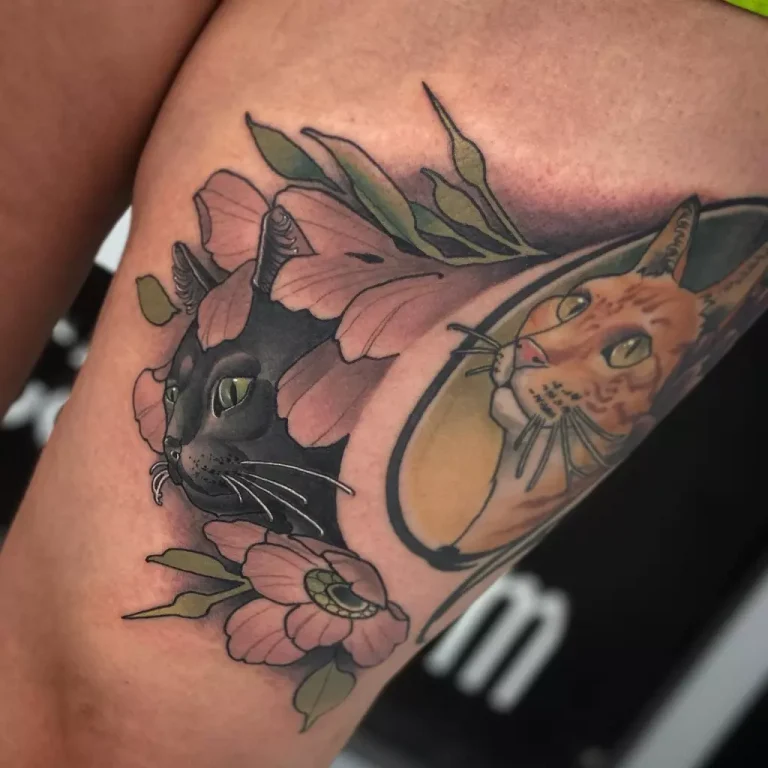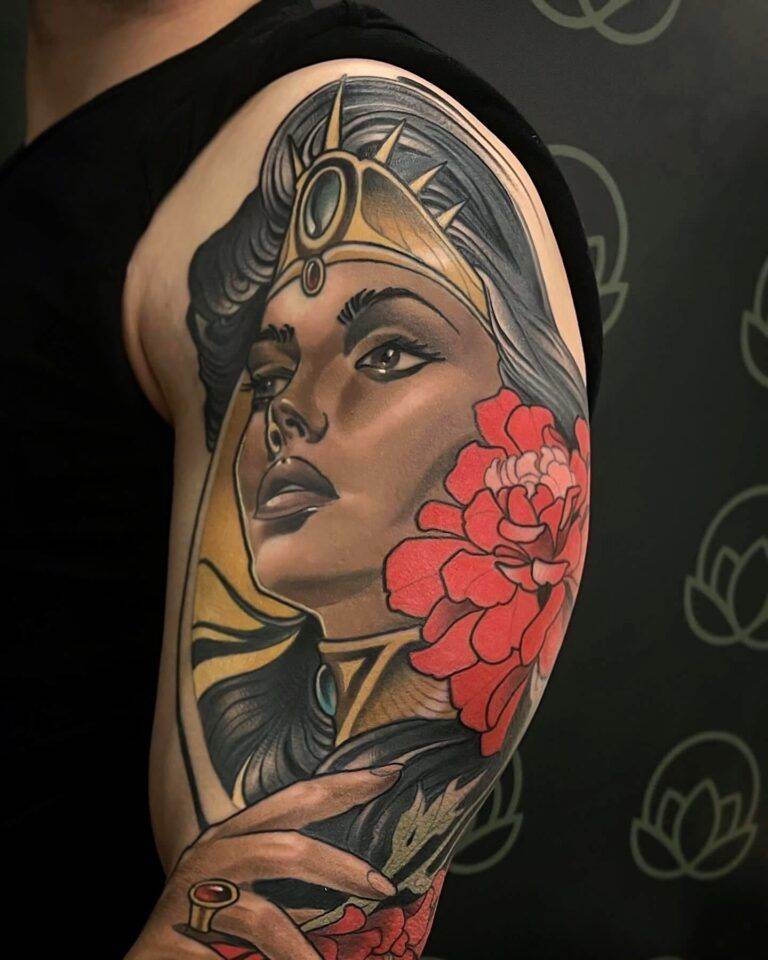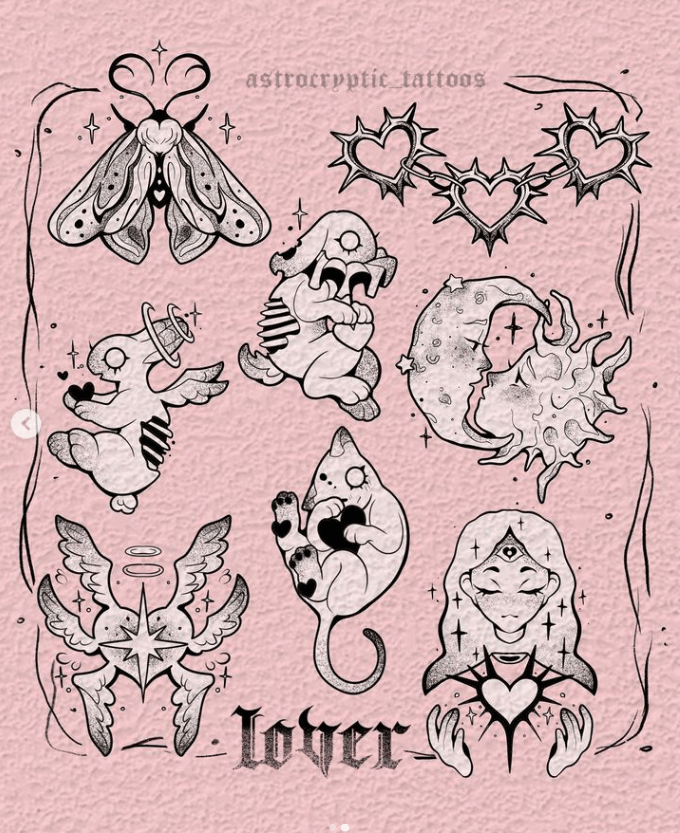Portrait tattoos have become increasingly popular in Houston, Texas, as people seek unique and meaningful ways to express themselves through body art. These tattoos are a way to capture the essence of a person or moment in time, and they require a skilled artist who can bring the image to life on skin. In this article, we will explore the art of portrait tattoos, discuss different styles and techniques, and provide tips for finding the right artist for your tattoo.
A portrait tattoo is a realistic representation of a person or animal that is permanently inked onto the skin. It is a way to honor loved ones, commemorate special moments, or simply showcase one’s personal style. These tattoos require a high level of skill and attention to detail, as the artist must capture not only the physical features of the subject but also their personality and essence.
The Art of Capturing Life’s Essence on Skin
Portrait tattoos are a unique form of art that allows individuals to capture the essence of a person or moment in time on their skin. These tattoos can be incredibly detailed and realistic, showcasing the talent and skill of the artist. They can also be deeply meaningful, serving as a constant reminder of someone or something that holds great significance in the wearer’s life.
One example of a famous portrait tattoo is the iconic image of Marilyn Monroe. This tattoo captures her beauty, elegance, and timeless appeal. Another example is the portrait tattoo of Albert Einstein, which showcases his intelligence and wisdom. These tattoos serve as a tribute to these iconic figures and allow individuals to carry their legacy with them wherever they go.
Exploring Different Styles of Portrait Tattoos
There are several different styles of portrait tattoos, each with its own unique characteristics and techniques. Some popular styles include black and grey, watercolor, and neo-traditional.
Black and grey portrait tattoos are known for their realistic and detailed shading. This style uses varying shades of black ink to create depth and dimension, resulting in a highly realistic image. Black and grey portrait tattoos are often used to capture the subtle nuances of a person’s face or the intricate details of a specific moment in time.
Watercolor portrait tattoos, on the other hand, are characterized by their vibrant colors and fluid brushstrokes. This style mimics the look of a watercolor painting, with soft edges and blended colors. Watercolor portrait tattoos are often used to create a more artistic and abstract representation of a person or moment.
Neo-traditional portrait tattoos combine elements of traditional tattooing with more modern techniques. This style often features bold lines, bright colors, and exaggerated proportions. Neo-traditional portrait tattoos are known for their bold and vibrant appearance, making them a popular choice for those looking for a more stylized representation.
Realistic vs. Abstract: Which Style is Right for You?
When choosing a style for your portrait tattoo, it’s important to consider whether you prefer a more realistic or abstract representation. Both styles have their own unique pros and cons.
Realistic portrait tattoos are highly detailed and lifelike, capturing every wrinkle, freckle, and expression. These tattoos require a skilled artist who can accurately replicate the features of the subject. The advantage of a realistic portrait tattoo is that it can create a striking resemblance to the person or moment being depicted. However, the downside is that realistic tattoos may require more touch-ups over time to maintain their quality.
Abstract portrait tattoos, on the other hand, offer a more artistic and interpretive representation. These tattoos often use bold colors, unique brushstrokes, and unconventional techniques to create a more abstract and stylized image. The advantage of an abstract portrait tattoo is that it allows for more creativity and personal interpretation. However, the downside is that it may not capture the exact likeness of the subject as accurately as a realistic tattoo.
When choosing a style, it’s important to consider factors such as your personal preference, the subject matter of the tattoo, and the overall aesthetic you are trying to achieve. It’s also helpful to consult with your chosen artist, as they can provide guidance and recommendations based on their expertise.
The Importance of Proper Placement for Portrait Tattoos
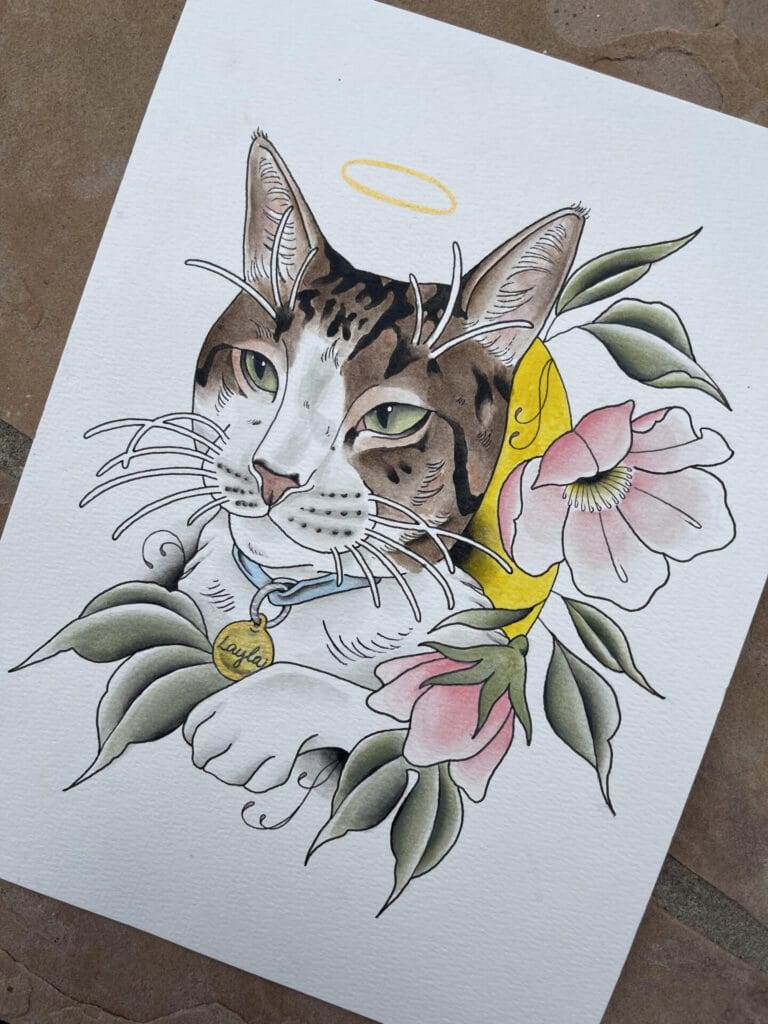
The placement of a portrait tattoo is just as important as the design itself. The right placement can enhance the overall look of the tattoo and ensure that it ages well over time.
When choosing the placement for your portrait tattoo, consider factors such as visibility, size, and how it will interact with other tattoos or body modifications you may have. For example, if you want your portrait tattoo to be highly visible, you may choose to place it on your forearm or upper arm. If you prefer a more discreet placement, you may opt for an area such as your back or thigh.
It’s also important to consider how the placement will affect the overall composition of the tattoo. For example, if you have multiple tattoos or plan to get more in the future, you may want to choose a placement that allows for a cohesive and balanced look. Additionally, consider how the placement will interact with the natural contours and movement of your body. Certain areas, such as the inner arm or neck, may be more prone to stretching or fading over time.
Ultimately, the right placement for your portrait tattoo will depend on your personal preference and the specific design you have chosen. It’s important to consult with your chosen artist, as they can provide guidance and recommendations based on their experience and expertise.
Tips for Caring for Your Portrait Tattoo
Once you have gotten your portrait tattoo, it’s important to take proper care of it to ensure that it heals well and maintains its quality over time. Here are some tips for caring for your portrait tattoo:
1. Follow the aftercare instructions provided by your artist. This may include washing the tattoo gently with mild soap and water, applying a thin layer of ointment or moisturizer, and avoiding direct sunlight or soaking in water for a certain period of time.
2. Avoid picking or scratching at the tattoo as it heals. This can cause scarring or damage to the tattooed area.
3. Keep the tattoo moisturized with a fragrance-free lotion or ointment. This will help prevent dryness and cracking, which can affect the overall appearance of the tattoo.
4. Avoid exposing the tattoo to direct sunlight or tanning beds. UV rays can fade the colors and cause the tattoo to lose its vibrancy over time.
5. Avoid swimming in pools, hot tubs, or bodies of water until the tattoo is fully healed. These environments can introduce bacteria and increase the risk of infection.
6. Avoid wearing tight clothing or accessories that may rub against the tattooed area. Friction can cause irritation and affect the healing process.
By following these tips, you can help ensure that your portrait tattoo heals well and maintains its quality over time.
Portrait Tattoos as a Way to Honor Loved Ones
One of the most common reasons people choose to get a portrait tattoo is to honor loved ones who have passed away. These tattoos serve as a permanent reminder of the person and their impact on the wearer’s life.
Memorial portrait tattoos can be incredibly powerful and emotional. They allow individuals to carry the memory of their loved ones with them wherever they go, serving as a source of comfort and strength. These tattoos often feature highly detailed and realistic portraits, capturing the likeness and essence of the person being honored.
Examples of memorial portrait tattoos include portraits of parents, siblings, children, or close friends who have passed away. These tattoos can be accompanied by meaningful symbols or quotes that represent the person’s life or personality. Some individuals also choose to incorporate elements such as flowers, angels, or religious symbols to further personalize the tattoo.
The Emotional Significance of Portrait Tattoos
Portrait tattoos can hold deep emotional significance for the wearer. They serve as a way to commemorate important moments, honor loved ones, or express personal beliefs and values.
For example, a portrait tattoo of a child may hold immense emotional significance for a parent, representing their love and devotion to their child. Similarly, a portrait tattoo of a beloved pet may serve as a constant reminder of the joy and companionship they brought into the wearer’s life.
Portrait tattoos can also hold emotional significance for individuals who have overcome personal struggles or experienced significant life changes. These tattoos can serve as a reminder of their strength, resilience, and personal growth.
Examples of portrait tattoos with emotional significance include portraits of grandparents who played a significant role in the wearer’s upbringing, portraits of military service members who have sacrificed for their country, or portraits of historical figures who have inspired the wearer.
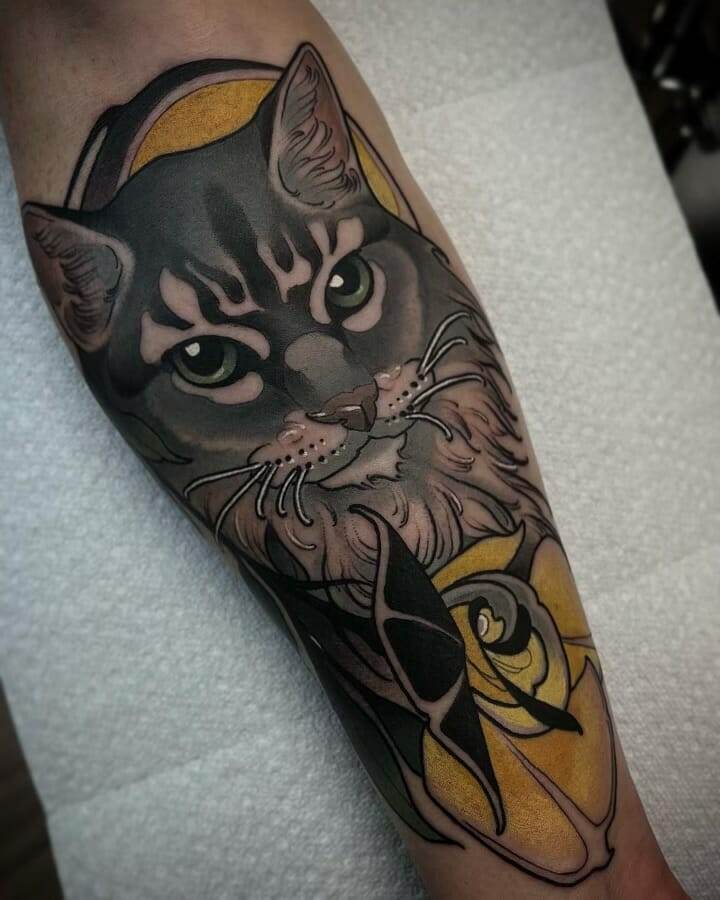
The Process of Creating a Custom Portrait Tattoo
Creating a custom portrait tattoo is a collaborative process between the artist and the client. It involves several steps to ensure that the final design accurately captures the essence of the subject and meets the client’s expectations.
The first step in creating a custom portrait tattoo is to find an artist who specializes in this style and whose work aligns with your vision. Once you have chosen an artist, schedule a consultation to discuss your ideas and provide any reference photos or inspiration you may have.
During the consultation, the artist will ask questions to better understand your vision and gather any additional information they may need. They may also take measurements or make sketches to ensure that the proportions and placement of the tattoo are accurate.
After the consultation, the artist will create a preliminary sketch or digital rendering of the design. This will allow you to visualize how the final tattoo will look and make any necessary adjustments or changes.
Once the design is finalized, the artist will schedule a tattoo session. During this session, they will transfer the design onto your skin using a stencil or freehand technique. They will then begin tattooing, carefully working to capture the details and shading of the portrait.
The length of the tattoo session will depend on the size and complexity of the design. Portrait tattoos can be time-consuming, as they require a high level of precision and attention to detail. It’s important to be patient and allow the artist to work at their own pace to ensure that the final result is of the highest quality.
Celebrating Life’s Milestones with a Portrait Tattoo
Portrait tattoos are a unique and meaningful way to celebrate life’s milestones, honor loved ones, or simply showcase one’s personal style. These tattoos capture the essence of a person or moment in time, serving as a constant reminder of what is important in life.
Whether you choose a realistic or abstract style, finding the right artist is crucial to ensuring that your portrait tattoo turns out as desired. Take the time to research and consult with different artists before making a decision. Ask questions, review their portfolio, and read reviews from previous clients to ensure that they have the skills and expertise necessary to bring your vision to life.
Remember that a portrait tattoo is a lifelong commitment, so it’s important to choose a design and placement that you will be happy with for years to come. Take the time to consider your options, consult with your chosen artist, and trust your instincts.
In the end, a portrait tattoo is not just a piece of art on your skin; it is a reflection of who you are and what you hold dear. It is a celebration of life’s milestones, a tribute to loved ones, and a constant reminder of what truly matters. So, if you are considering getting a portrait tattoo, take the leap and embrace this unique form of self-expression.

